10 Most Common Butterflies in Oklahoma (With Pictures)
-
Lindsey Lawson
- Last updated:
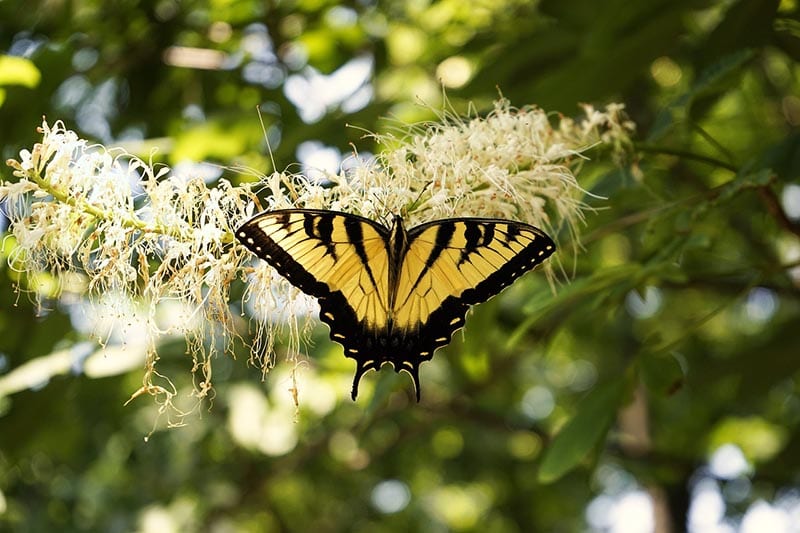
Ranging from small to large, there are more than 170 species of butterfly that can be observed taking flight throughout the state of Oklahoma. Here, we are going to look at 10 of the most common species that can be found in the state and provide some tips on how to attract these gorgeous creatures to your garden.

The 10 Most Common Butterflies in Oklahoma
1. Black Swallowtail

| Species: | Papilio polyxenes |
| Adult Size: | 2.5-4 inches |
| Adult Butterfly Stage: | 6-14 days |
Eight species of swallowtail have been recorded in Oklahoma, and one of the most common is the black swallowtail, which is also the official state butterfly. The species reached state symbol status in 1996 because of its beauty and grace.
The black swallowtail is a migratory species that can be seen in Oklahoma from May into October. They play an essential role in the cross-pollination of many plants within the state and feed on the nectar of thistles, clover, phlox, and milkweed.
This beautiful species is often observed in open areas like fields, grasslands, marshes, and even parks. The adult butterfly stage typically only lasts about 1 week, but can range from 6 to 14 days.
2. Red-spotted Purple

| Species: | Limenitis arthemis |
| Adult Size: | 3-3.5 inches |
| Adult Butterfly Stage: | 6-14 days |
The red-spotted purples are widespread throughout North America and were split between two groups due to differences in characteristics. The other variety is known as the white primary, which is found in the northern United States and up into Canada.
This species is primarily diurnal and prefers shady areas of deciduous forests. They are often observed along the forest edges and along the roadside and primarily on black cherry and deerberry.
3. Eastern Tiger Swallowtail
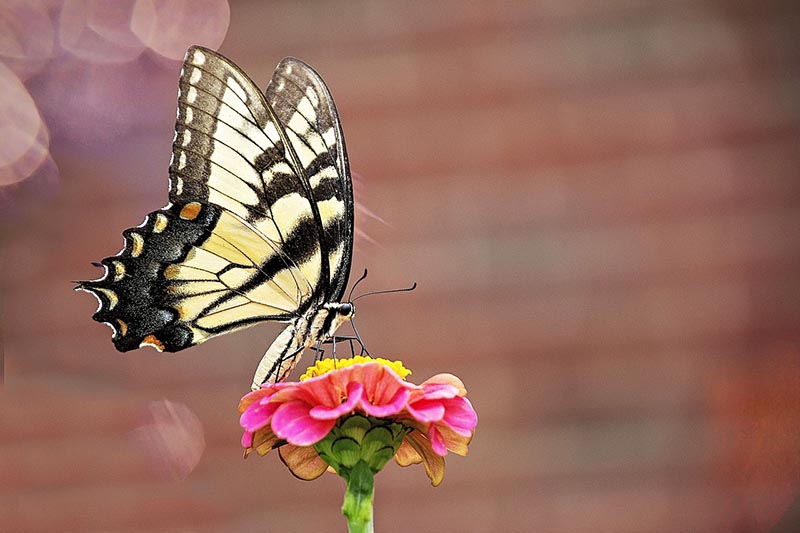
| Species: | Papilio glaucus |
| Adult Size: | 3-5.5 inches |
| Adult Butterfly Stage: | 6-14 days |
The Eastern tiger swallowtail is another swallowtail species that is very common in Oklahoma and easily recognizable with its stand-out beauty. They prefer to stick close to water sources and are commonly seen in open fields, gardens, and woodlands close to lakes or rivers.
This species ranges throughout the eastern half of the United States from Maine to Florida and as far west as Colorado. They get their name from the tiger-like stripes on their wings.
4. Monarch
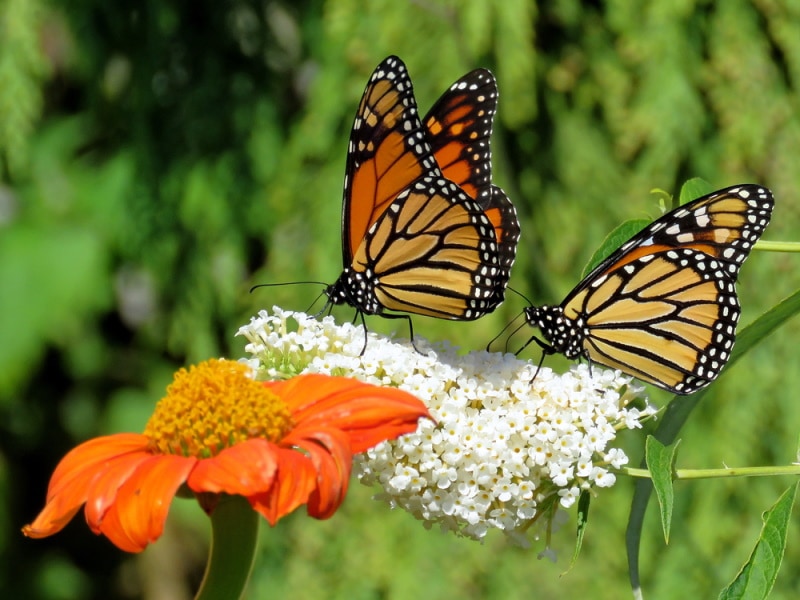
| Species: | Danaus plexippus |
| Adult Size: | 3.5-4 inches |
| Adult Butterfly Stage: | 2-5 weeks |
The monarch butterfly is undoubtedly one of the most popular and easily recognized butterflies in the United States. They are separated into two populations, the Eastern and the Western monarch. The dividing line is the Rocky Mountains, which means it’s the Eastern monarch that is the common type throughout Oklahoma.
Monarch butterflies are migratory insects that have been known to migrate up to 2,000 miles. They will feed on the nectar of a variety of blooming plants within the state and are most commonly seen in late September into early October.
5. Viceroy

| Species: | Limenitis archippus |
| Adult Size: | 2.5-3.75 inches |
| Adult Butterfly Stage: | 6-14 days |
The viceroy is another common species of butterfly in Oklahoma that can easily be mistaken for a monarch. Though they are very similar in size and looks, the viceroy tends to have a bit smaller wingspan. The visual difference between the two is that the viceroy has a black line across the hind wings, which the monarch butterfly lacks.
The viceroy ranges throughout most of the contiguous United States but can also be seen in areas of Canada and Mexico. They are often observed near marshes, swamps, and meadows. This species enjoys more humid areas and will feed on a variety of nectars from blooming vegetation.
6. Summer Spring Azure
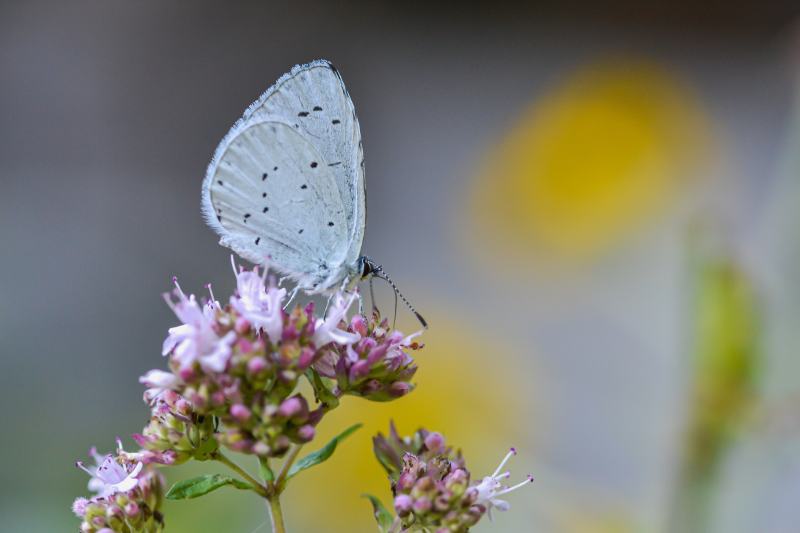
| Species: | Celastrina neglecta |
| Adult Size: | 1.25-1.75 inches |
| Adult Butterfly Stage: | A few days to a few weeks |
The summer azure is a smaller species of butterfly that is common throughout the eastern and central regions of the United States. They thrive in a variety of habitats, including gardens, marshes, woodlands, open fields, and near streams.
This species is very common in Oklahoma except for the far western area of the panhandle. They will typically become noticeable sometime during late June or early July, which is how they get their name.
7. Gray Hairstreak

| Species: | Strymon melinus |
| Adult Size: | 1-1.25 inches |
| Adult Butterfly Stage: | 3-4 weeks |
The gray hairstreak is another small butterfly that is incredibly common in Oklahoma. They are distributed widely throughout North America and have even been seen in northern regions of South America.
This species feeds on the nectar of numerous flower species with a primary focus on mint, winter cress, sweet white clover, dogbane, milkweed, and goldenrod. They have a very quick and erratic flight pattern. The gray hairstreak is most often seen from May through September.
8. Pipevine Swallowtail
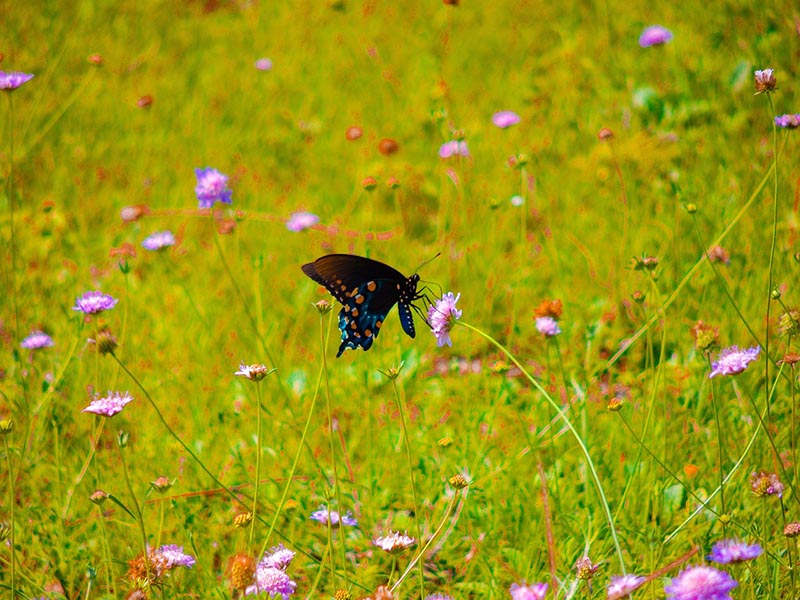
| Species: | Battus philenor |
| Adult Size: | 2.75-5 inches |
| Adult Butterfly Stage: | 6-14 days |
The pipevine swallowtail is common throughout the entire state of Oklahoma. They are widely distributed throughout most of the United States except for the northwestern region. These butterflies are strikingly beautiful with their black and blue coloration.
In Oklahoma, this species is most often observed during the fall season, feeding primarily on the nectar of thistle, phlox, and various species of Vernonia. Their habitat includes grasslands, meadows, woodlands, and even backyard gardens.
9. Variegated Fritillary
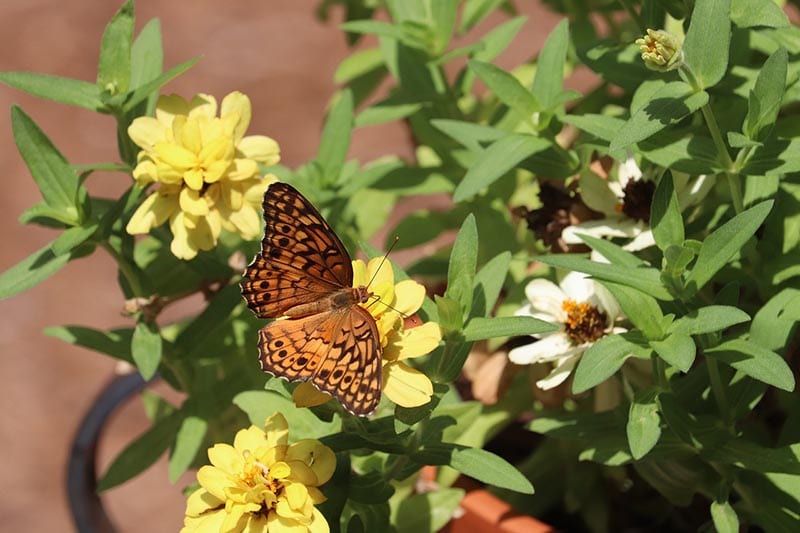
| Species: | Euptoieta claudia |
| Adult Size: | 1.75-2.75 inches |
| Adult Butterfly Stage: | 2-10 weeks |
The variegated fritillary is a species that is common throughout a lot of the United States except for the Pacific Northwest. They do prefer more southern regions and are much denser in these areas.
This species is often found in open fields, farmland, near prairies, and along roadsides. They feed on the nectar of a wide variety of plants including butterfly weed, milkweed, dogbane, peppermint, red clover, sunflower, and tick weed.
10. Cabbage White
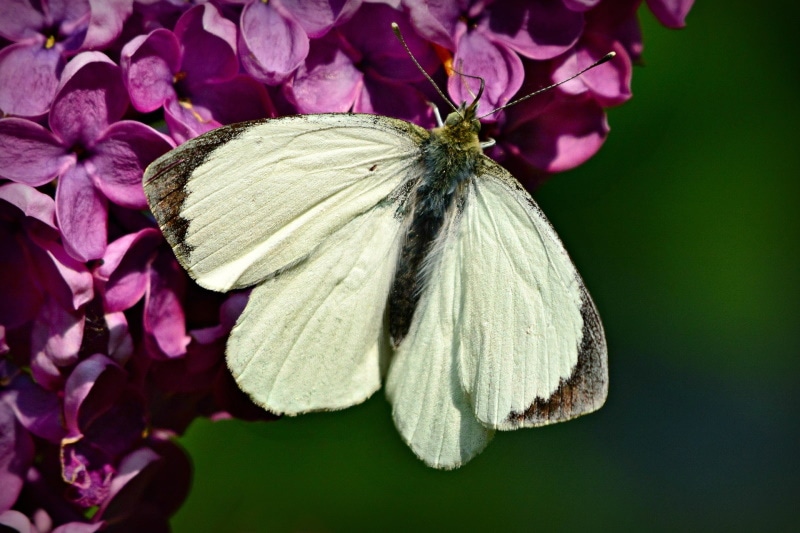
| Species: | Pieris rapae |
| Adult Size: | 1.75-2.25 inches |
| Adult Butterfly Stage: | 2-10 weeks |
The cabbage white is a small to medium-sized butterfly that is commonly seen in Oklahoma between May and October. Their distribution stretches throughout several continents, where they are referred to by different names such as white butterfly, small cabbage white, and cabbage butterfly.
This is not a native North American species; it is native to Europe and Asia. It was accidentally introduced in Quebec, Canada in the late 1800s and quickly spread throughout the continent. The adults feed on flower nectar, but the caterpillars are considered pests because they feed on a variety of garden vegetables.

Tips for Attracting Butterflies to Your Garden
Butterflies are incredible insects that are truly enjoyable to observe. From the large, graceful species to the smaller, more erratic ones, they are a wonderful symbol of transformation, hope, and beautiful sunny weather. Here are some tips for attracting these beauties into your garden for your viewing pleasure.
Grow Colorful, Nectar Producing Plants
Since adult butterflies feed on nectar, you will want to have plants that produce nectar planted throughout your garden. Butterflies are also highly attracted to bright colors like red, yellow, orange, pink, and purple so you can enrich your area by planting a variety of flowers with these colors of blooms.
Avoid Pesticides
Pesticides aren’t just harmful to the environment; they are lethal to butterflies. If you want butterflies to feel welcome in your yard, you will need to ditch the pesticides.
Plant Native Flowers
The best way to attract native butterflies is by planting native flowers. Do some research on the nectar-producing plants in your region that are most likely to attract butterflies and make sure to plant plenty of them throughout your yard or garden since they will naturally be searching for these plants to feed on.
Provide a Water Source
Butterflies require moisture and a lot of species will frequent areas with easy water sources. Butterflies can’t land on water to drink, so it’s a good idea to put out shallow pans. You can fill them with sand and then add water. The butterflies will land on the sand and suck up the moisture directly from it.
Put Up Basking Areas
Butterflies need sunlight to warm their wings and prepare them for their flight during the day. Fill your garden with a variety of flat stones and areas that will be safe for butterflies to take a pause and bask in the sun.
Make Your Yard Caterpillar-Friendly
One way to ensure your yard will successfully invite in a variety of butterflies is by appealing to them during the caterpillar stage. If you provide food sources for the caterpillars, you are much more likely to have a yard full of butterflies when they finally go through metamorphosis and reach the adult stage.

Conclusion
There is no shortage of butterflies to observe in Oklahoma, and though this list is full of some of the most common species, there are plenty more to be admired. If you follow the tips above, you can easily attract a variety of butterflies into your yard so that you can enjoy them during the warm weather seasons.
- https://www.wildlifedepartment.com/wildlife/field-guide/invertebrates/monarch
- https://entnemdept.ufl.edu/creatures/bfly/bfly2/eastern_black_swallowtail.htm
- https://www.uky.edu/hort/butterflies/Cabbage-white
- https://www.floridamuseum.ufl.edu/exhibits/blog/red-spotted-purple-butterfly/
- https://entnemdept.ufl.edu/creatures/bfly/viceroy.htm
- https://entnemdept.ufl.edu/creatures/bfly/pipevine_swallowtail.htm
- https://alabama.butterflyatlas.usf.edu/species/details/145/gray-hairstreak
- https://alabama.butterflyatlas.usf.edu/species/details/71/variegated-fritillary
- https://edis.ifas.ufl.edu/publication/IN218
- https://alabama.butterflyatlas.usf.edu/species/details/37/summer-azure
Featured Image Credit: Valoxioma, Pixabay
Contents
